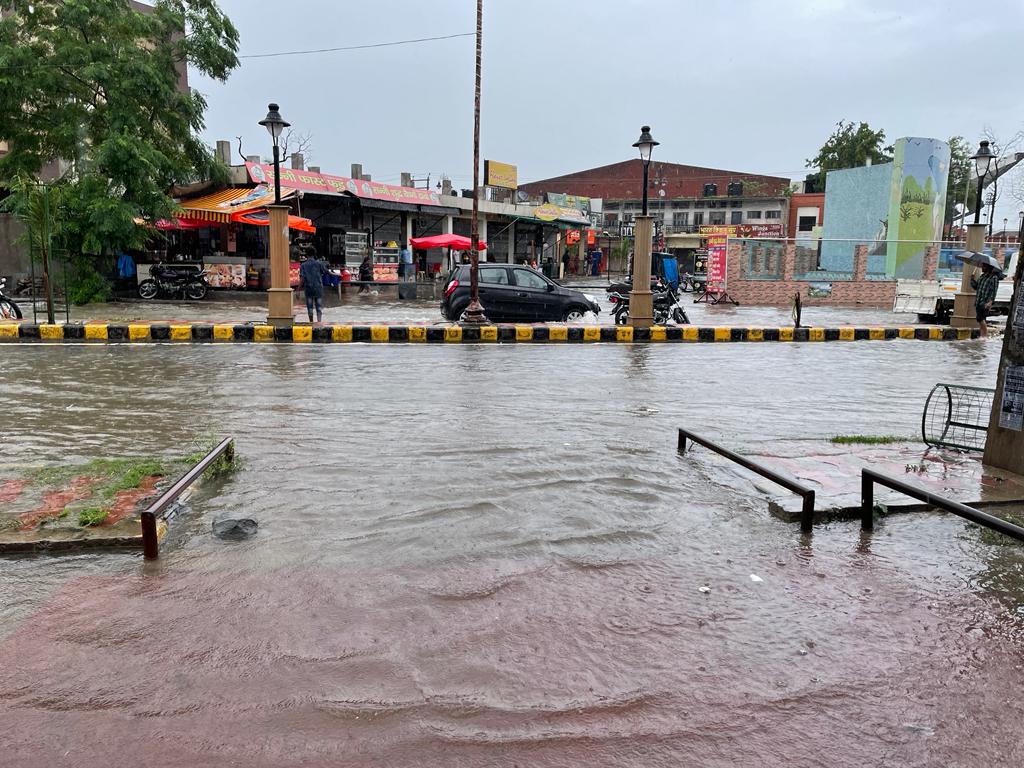Waterlogged Houses and Traffic Chaos: Ambala’s Battle with Heavy Rainfall
The recent heavy downpour in Ambala, a city in northern India, has resulted in waterlogged houses and severe traffic congestion. The region, including the capital city of Delhi, experienced intense rainfall, causing waterlogging in various areas and posing significant challenges for residents and commuters. This article highlights the extent of the problem, the damage caused, and the frustrations expressed by residents towards the local administration.
Following heavy rains on Sunday and Monday morning, Ambala grappled with the aftermath of continuous downpours. The city was inundated with water, affecting numerous neighbourhoods and posing considerable difficulties for residents. Even areas not accustomed to flooding, such as the Military Hospital, experienced waterlogging, leaving residents astonished and worried.
The deluge has resulted in water accumulation within residential areas and has made accessing the city problematic. Major roads, including Railway Road and Football Chowk, have been inundated, making it challenging for commuters to navigate the waterlogged streets. The situation has severely disrupted daily life, with citizens reporting unprecedented levels of waterlogging throughout Ambala.
One of the areas hit hardest by the heavy rainfall was the Industrial Area of Ambala. The excessive rain caused significant damage to businesses and infrastructure, affecting productivity and economic activity. Industrial units and factories faced the brunt of the waterlogging, leading to potential financial losses and hampering the livelihoods of many workers.
As the rainwater engulfed the city, it rendered several roads impassable, resulting in chaotic traffic conditions. Vehicles struggled to traverse the submerged roads, leading to extensive traffic jams and long delays. Frustrated with the situation, the residents directed their ire towards the local administration, including the municipal corporation and municipal council, holding them responsible for the lack of preparedness and timely action to mitigate the waterlogging problem.
The waterlogging crisis in Ambala highlights the pressing need for improved infrastructure and better urban planning to withstand heavy rainfall. Effective drainage systems, properly maintained canals, and timely cleaning of stormwater drains are essential to prevent such inundations. Additionally, the authorities must prioritize measures such as dredging and desilting of water bodies and regular inspections of existing infrastructure to ensure their functionality.
In the wake of the waterlogging crisis, the local administration needs to mobilize emergency response teams promptly. Timely deployment of rescue teams, provision of relief materials, and assistance to affected residents will go a long way in mitigating the hardships faced by the community. Collaborating with various stakeholders, such as NGOs, volunteer groups, and citizens, can help efficiently coordinate relief efforts.

